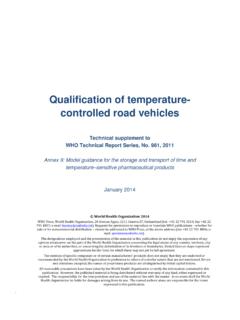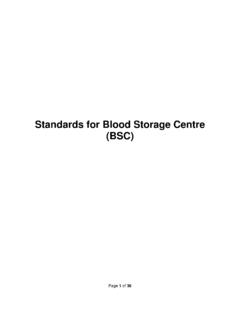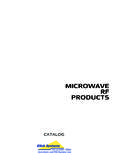Transcription of Thermostatic Mixing Valves - The Bathroom Academy
1 1 Industry Guide to Thermostatic Mixing Valves Issue 4/11 Copyright 2015 Bathroom Manufacturers AssociationThe Bathroom AcademyStrategic Professionalsin partnership withThermostatic Mixing Valves2 Industry Guide to Thermostatic Mixing Valves Issue 4/11 Copyright 2015 Bathroom Manufacturers AssociationThermostatic Mixing ValvesGeneric Industry GuideWelcome to the Thermostatic Mixing Valves Generic Industry Guide one in a series of Industry Guides which are available free of charge from the Bathroom Academy Web have aimed to make the contents of the Guides both informative and relevant and hope you will consider them a valuable aid to your continuing professional development and that of your colleagues, within the Bathroom guide has been written by experts and contains the same five elements.
2 Right choice of product for end user needs Generic industry design Generic industry installation Frequently asked questions Generic industry terminologyThe Thermostatic Mixing Valves Generic Industry Guide looks at the vast range of Thermostatic Mixing Valves that are available and offers essential information which will allow the Retailer, Merchant and Installer to provide items best suited to the end user s needs, whilst the customer s major considerations will be cost, functionality, durability and aesthetics.
3 It is also essential to consider a number of important additional factors; available space, storage requirements and the materials used to manufacture the furniture and its suitability and compatibility with the bathing and/or showering suite within the guides in the series are: Baths Bathroom Furniture Brassware Domestic Water Systems Sanitaryware and Fittings Shower Controls Shower Enclosures Shower Trays WetroomsAll guides will be downloadable free of charge from to gain evidence and recognition of your knowledge of Thermostatic Mixing ValvesDid you know that when you have studied the guide in detail you can apply to be assessed and tested on your new found knowledge and if successful, achieve the Thermostatic Mixing Valves Bathroom Academy Merit?
4 To find out more about what you need to do to achieve this qualification go Guide to Thermostatic Mixing Valves Issue 4/11 Copyright 2015 Bathroom Manufacturers AssociationContentsIntroduction - What is a Thermostatic Mixing Valve (TMV)? - Where are TMVs used? - TMVs and the law - Why are TMVs becoming mandatory to fit? Section 1 Types of Thermostatic Mixing Valves Differing Thermostatic Mechanisms - Wax capsule - Bi-metalic - Electonic/digital Section 2 Differing Mechanical Configurations - T pattern - Showers - single sequential control - Showers - multiple control - Showers - built in - Showers - exposed - Bath
5 Shower Mixers Section 3 Factor Affecting Choice of Product - End use - safety capability - Temperature stability with changing inlet pressures - Temperature stability with changing inlet temperatures - Sensitivity of temperature controls - Temperature stability at reduced flow rate - Thermal shut off - TMV2 approval - TMV3 approval - Water supply - Water efficiency - Correct selection of product - Flow regulators - Spray plate design Section 4 Installing.
6 Commissioning and Maintenance - General - T Pattern TMVs - Showers - Bath Shower Mixers - Taps - Commissioning - Maintenance Section 5 Common Fault Diagnosis - No water flow - Water too cool - Water too hot - Poor flow Section 6 Frequently Asked QuestionsSection 7 Industry TerminologySection 8 ReferencesIntroductionThis guide provides essential information on the different types of Thermostatic Mixing Valves (TMVs) available and highlights necessary considerations to ensure the correct choice of product to satisfy the needs of the end is a Thermostatic Mixing Valve?
7 Quite simply a Thermostatic Mixing valve is a device that mixes hot and cold water before discharging it at a stable are TMVs used?Domestically TMVs are most commonly used as showers. However, TMVs can be found in a number of other applications around the home ranging from controls on solar thermal hot water systems to taps and bidet of domestic installations TMVs are often used for safety reasons in Hospitals and care homes, showering controls in sports centres and even process controls in factories. This is because warm water encourages bacteria to grow and hot water kills it but can cause and the lawAs of the 1st of May 2006 the Scottish Building Standards Agency introduced mandatory requirements for all new build and major refurbishment work ( when Building Regulation approval is required) to prevent scalding by controlling the maximum temperature of water discharged from, or to, any bath or bidet (domestic situations) to a maximum of 48 C.
8 As of the 6th April 2010, similar requirements were incorporated into The Building Regulations 2000 Approved Document G for Sanitation, hot water safety and water efficiency. There is also guidance within the Water Supply (Water Fittings) Regulations 1999 that recommends the use of Thermostatic Mixing Valves in schools, public buildings and other public are TMVs becoming mandatory to fit?Hot bath water is responsible for the highest number of fatal and severe scald injuries in the home. Young and old are most at risk because their skin is thinner and less tolerant to high water temperatures.
9 According to the National Network for Burn Care: Acute injury admissions to specialised burns services in England and Wales number approximately 300 people each year suffering with scalds associated with tap water and bathing immersion, most of these incidents occur in their own home. 4 Industry Guide to Thermostatic Mixing Valves Issue 4/11 Copyright 2015 Bathroom Manufacturers AssociationSection 1 Types of Thermostatic Mixing ValvesTo help understand exactly what first, second and third degree burns are and how serious they can be, see the following classification table and descriptions at various hot water temperatures.
10 Temp Adult 3rd degree burn Adult 2nd degree burn Child 3rd degree burn Child 2nd degree burn45 C >60m (e) >60m (e) >50m (e) >30m (e)50 C 300s 165s 105s 45s55 C 28s 15s 8s








